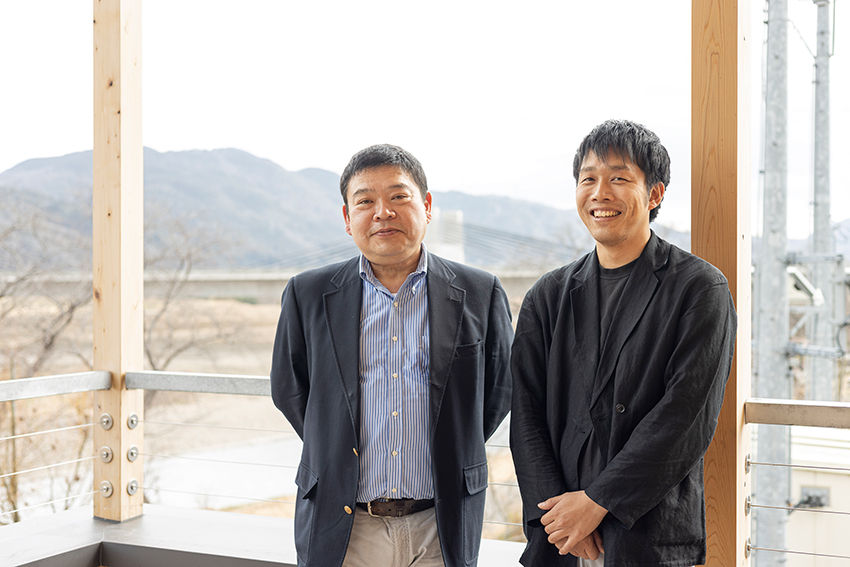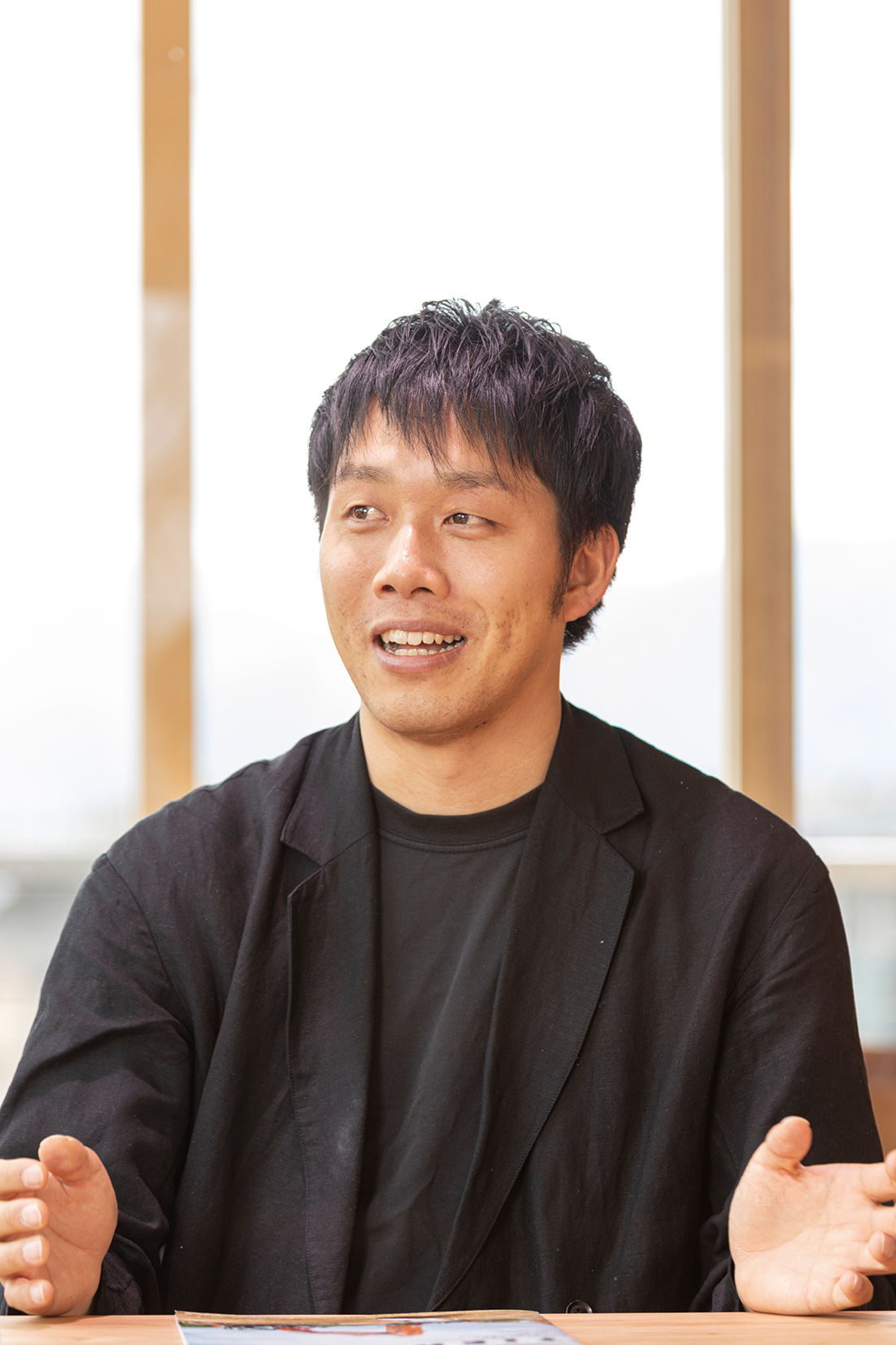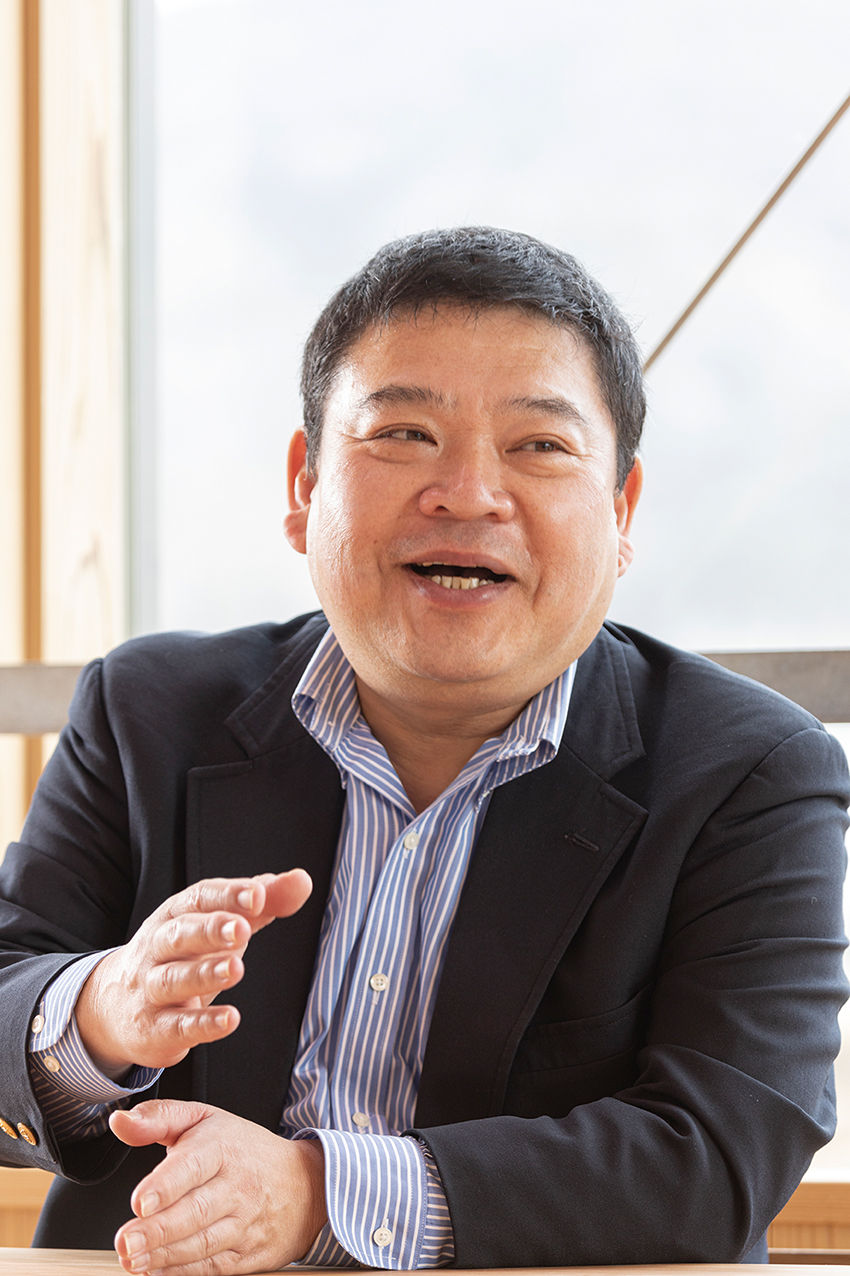Special Dialogue
Special Dialogue
Unpacking the Evolution of the Remanufacturing Business

Michio Sugawara(Left) General Manager of the Remanufacturing Division and Masayuki Terai(Right) Representative of “Gomi no Gakko” (School of Waste Management)
What significance does Hitachi Construction Machinery’s commitment to the remanufacturing business hold for the future of society?
In this dialogue, Masayuki Terai, who leads “Gomi no Gakko” (School of Waste Management) and works to raise awareness about waste management issues, talks with Michio Sugawara, General Manager of the Remanufacturing Division. From their differing perspectives on environmental issues, the two uncover shared insights and values.
Terai : I understand that Hitachi Construction Machinery started its remanufacturing initiative in the 1960s. That was even before Japan enacted the Wastes Disposal and Public Cleansing Act in 1970 , when “incinerate and bury” was just beginning. It was a remarkably early initiative. Nowadays, secondhand cars and electronics are being reevaluated from the perspective of the circular economy, but back then, everyone likely favored new products over reused ones.posal and Public Cleansing Act in 1970 , when “incinerate and bury” was just beginning. It was a remarkably early initiative. Nowadays, secondhand cars and electronics are being reevaluated from the perspective of the circular economy, but back then, everyone likely favored new products over reused ones.
Sugawara : I heard that our initiative began in response to customer needs for obtaining high-quality products at lower costs while reducing machinery downtime. Later, societal conditions changed, regulations on waste disposal increased, and environmental awareness grew over time. Consequently, I feel that this business has evolved alongside our customers and society as a whole.
Terai : So, you mean, as society has changed, customers’ challenges have shifted as well, motivating an increasing number of customers to choose remanufactured parts for environmental reasons?
Sugawara : That’s correct. Such cases are indeed increasing, although gradually. We are also strengthening efforts to realize a circular society by working with group companies worldwide to establish parts remanufacturing bases.
Terai : With stricter environmental regulations in emerging countries, it’s becoming harder to export used equipment overseas and replace them with new ones, as was common in the past. Instead, people may find it more beneficial to extend the life of their machinery by having you collect old parts and replace them with remanufactured ones.
Sugawara: Absolutely. For instance, customers who previously replaced their machinery every five years are increasingly considering longer usage—to 10 or even 15 years—provided they have manufacturer support.
Bottom-Up Enthusiasm as a Foundation
Terai : That said, initiatives like these tend to be driven top-down, often taking time to gain understanding and cooperation within a company. At “Gomi no Gakko,” we run an initiative called the “Repair Café,” where volunteers repair various items free of charge. Through this, I often hear how challenging it is to consider remanufacturing as a business. How did you advance the initiative?
Sugawara : Looking back, I was often asked, “Can this even become a viable business?” We simply started it and kept doing it step by step through trial and error. I guess that our mindset of responding to customer needs was so deeply ingrained that it made it easier to gain understanding within the company.
Terai : I see. You can’t achieve anything unless you try. This is especially true for remanufacturing. I deeply resonate with that. Personally, I think KPIs (key performance indicators) and the circular economy don’t align well. Of course, short-term metrics are important in business, but wouldn’t it be more profitable in the long run to gain 10 loyal customers who continue to partner with you over time?
Sugawara : Absolutely. We have been developing businesses that encompass the entire lifecycle of machinery—beyond new machinery sales, we also provide parts, services, rentals, and used equipment. Among these, I believe the remanufacturing business stands out as an initiative that reduces environmental impact while fostering long-term connections with our customers. The concept behind “Gomi no Gakko” is “creating an exciting society through waste,” and I feel the same way about our work. Interestingly, our circular economy approach originated from a proposal by young employees in the Remanufacturing Division. We refined the idea as a division and presented it directly to the executives, which became the starting point for the company to embrace the circular economy officially.
Terai : It’s common to hear about sustainability initiatives starting with executives or sustainability promotion teams and then filtering down to business departments. It’s incredible that this one emerged from the bottom up.

Masayuki Terai
Representative of “Gomi no Gakko” (School of Waste Management)
Born in Kameoka City, Kyoto Prefecture. After graduating from university, he joined an industrial waste management company. With over 50 appearances as a speaker and lecturer on industrial waste topics, he now runs “Gomi no Gakko” with the goal of creating an exciting society through waste.

Michio Sugawara
General Manager of the Remanufacturing Division
Working Together with Like-Minded Partners
Terai : From the perspective of my activities of “Gomi no Gakko,” I believe that creating products that last for a hundred years has always been a hallmark of Japanese manufacturers, making them inherently suited to the circular economy. In fact, I think that’s where Japan’s competitive edge lies. However, when the same concept is expressed in new words like “circular economy,” they often perceive them as distant or unrelated to themselves. I wish more people would realize that these values are actually very close to the core of our traditional craftsmanship and industries.
Sugawara : Japan is a country with limited resources, so the business model of mass production, mass selling and mass consumption doesn’t really fit here. Without incorporating resource circulation methods, I believe it’s difficult for companies to survive.
Terai : Interestingly, among the items brought to the Repair Café, newer products are surprisingly difficult to fix. Older products, however, are designed to be repairable. I have observed a shift in consumer awareness. “Gomi no Gakko,” which I run, also grew out of a group of people who share such values. Particularly the younger generation, resonates with ideas of environmental contribution and sharing. I hope Hitachi Construction Machinery’s remanufacturing business model gains even more recognition, encouraging others to realize the strengths inherent to Japanese companies and inspiring more people to take on similar challenges.
Sugawara : Right now, we’re working on building a network of like-minded partners to collaborate on the remanufacturing business. The more partners we have, the more enjoyable the journey becomes. That will allow us to expand the business, bringing a sense of accomplishment and joy. Valuing such sense of “excitement,” we aim to further improve the services we offer our customers through the remanufacturing business while enhancing our contributions to environmental sustainability.
Text by Toshiaki Saito
Photography by Ryota Nasu
Related article
Remanufactured Parts
Revive, REMANUFACTURE once again




